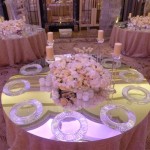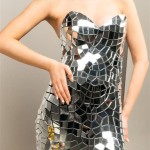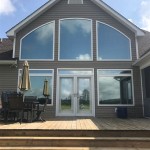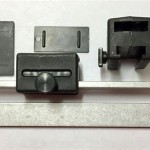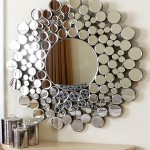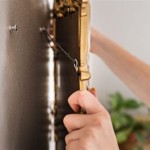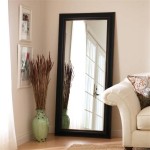Are Mirrors Still Made With Silver?
Mirrors, ubiquitous objects in modern life, have a rich history spanning millennia. From polished obsidian used by ancient civilizations to the highly reflective surfaces we use today, the technology of mirror making has evolved significantly. One of the pivotal advancements in this history was the introduction of silvering, a technique that revolutionized mirror production and quality. This article explores the modern methods of mirror manufacturing and the continued relevance of silver in creating these reflective surfaces.
Key Points About Traditional Silvering:
- Utilized a chemical process to deposit a thin layer of silver onto glass.
- Offered superior reflectivity compared to earlier methods.
- Became the standard for mirror production for many years.
The traditional silvering process involved a complex chemical reaction. A solution containing silver nitrate was mixed with a reducing agent, typically glucose or formaldehyde. This mixture was then applied to a clean glass surface. The reducing agent caused the silver ions in the solution to convert to metallic silver, which adhered to the glass, forming a reflective layer. A protective backing, often paint or shellac, was then applied to prevent oxidation and damage to the delicate silver layer. This method, while effective, presented several challenges, including the use of hazardous chemicals and the potential for environmental impact.
Key Points About the Downsides of Traditional Silvering:
- Involved the use of hazardous chemicals like silver nitrate.
- Posed environmental concerns due to chemical waste.
- The silver layer was susceptible to oxidation and damage.
Modern mirror manufacturing has largely moved away from the traditional silvering process in favor of more efficient and environmentally friendly methods. One of the most common techniques today is vacuum deposition, specifically using aluminum as the reflective coating. This process takes place in a vacuum chamber where aluminum is heated to a gaseous state. The aluminum vapor then condenses onto the glass surface, forming a thin, uniform, and highly reflective layer. This method offers significant advantages over traditional silvering.
Key Points About Aluminum Vacuum Deposition:
- Takes place in a vacuum chamber, eliminating atmospheric interference.
- Uses aluminum, a more readily available and less expensive material than silver.
- Produces a highly uniform and durable reflective coating.
- Is more environmentally friendly than traditional silvering.
While aluminum has become the dominant material for mirror coatings, silver still holds a place in specialized applications. In situations requiring the highest reflectivity across the visible light spectrum, silver remains superior to aluminum. This makes silvered mirrors preferred for certain scientific instruments, telescopes, and high-performance optical systems. Additionally, silver offers a slightly warmer reflection compared to the cooler, bluish tint of aluminum, making it desirable in some aesthetic applications.
Key Points About Silver's Continued Relevance:
- Offers superior reflectivity across the visible light spectrum compared to aluminum.
- Preferred for certain scientific instruments and high-performance optical systems.
- Provides a warmer aesthetic quality compared to aluminum's cooler reflection.
The methods for applying silver to glass in these specialized applications have also evolved. Instead of the traditional chemical process, manufacturers now often utilize vacuum deposition techniques similar to those used for aluminum. This allows for a more controlled and precise application of the silver layer, resulting in higher quality and more durable mirrors.
Key Points About Modern Silvering Techniques:
- Often utilize vacuum deposition for a more controlled application.
- Result in higher quality and more durable silvered mirrors.
- Allow for precise control over the thickness and uniformity of the silver layer.
The evolution of mirror making technology represents a fascinating blend of traditional craftsmanship and modern scientific advancements. While aluminum has largely replaced silver as the standard reflective coating for everyday mirrors due to its cost-effectiveness and environmental benefits, silver continues to play a critical role in specialized applications where optimal reflectivity and specific aesthetic qualities are paramount. The use of vacuum deposition for both aluminum and silver coatings has streamlined the manufacturing process, resulting in higher quality, more durable, and more environmentally sound mirrors.
The advancements in mirror manufacturing demonstrate the ongoing pursuit of improved performance and sustainability. The choice between aluminum and silver coatings depends on the specific requirements of the application, balancing cost, reflectivity, durability, and environmental impact. As technology continues to advance, the future of mirror making may bring even more innovative and efficient methods for creating reflective surfaces.

Why Do Mirrors Look Silver Is There A Green Tinge

Mirrors In Antique Sterling Silver Bryan Douglas

Mirrors In Antique Sterling Silver Bryan Douglas

The Annecy Antique Silver Small Over Mantle 209 00 Mirrors Cau Luxury Furniture And Rococo Reion Baroque French Style Specialist

Abbots Full Length Mirror Silver 165cm X 79cm Mirrors Exclusive

The Annecy Mirror Antique Silver 5ft High 239 00 Mirrors Cau Luxury Furniture And Rococo Reion Baroque French Style Specialist

Silver Antique Effect Recatngle Wall Mirror 122cm X 91cm Mirrors Exclusive

Antique Silver Floor Leaner Decorative Mirrors China Mirror Wall Made In Com

French Silver Valois Louis Leaner Mirror Mirrors

Mirror Quirino Silver External Dimension 86x114cm Barokspiegel

